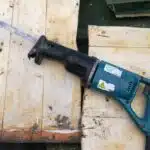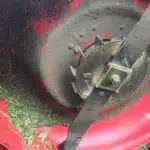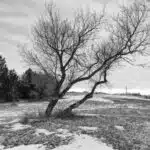As an arborist or a tree care professional, one of the most essential tools in your arsenal is the pole saw. It is a versatile tool that can be used for pruning, trimming, and cutting branches at heights that would normally require a ladder or climbing gear. Whether you are maintaining trees in a residential area or managing large tracts of land with dense vegetation, knowing how to use a pole saw correctly can help make the task more efficient and safer.
Using a pole saw may seem daunting at first, but with proper training and practice, it is a skill that can be easily mastered. In this article, we will provide you with detailed instructions on how to use a pole saw safely and effectively. We will cover the different types of pole saws available in the market and their uses, safety precautions to take before and during operation, techniques for cutting branches at different angles and heights, as well as maintenance tips to ensure your tool lasts longer. By following these guidelines, you can improve your tree care skills and provide better service to your clients.
Understanding The Different Types Of Pole Saws
According to recent statistics, thousands of people are injured each year while trimming trees. Many of these injuries could have been avoided if the proper equipment was used. This is where pole saws come in. As a tree care professional, it’s essential to understand the different types of pole saws and their appropriate uses.
Choosing the appropriate blade for your pole saw is crucial. The most common blade types are bypass and pruning blades. Bypass blades are great for cutting through live branches, while pruning blades work best on dead branches. It’s important to select a blade with teeth that are sharp and spaced correctly for efficient cutting.
Adjusting the pole length is another critical aspect of using a pole saw properly. Too short or too long a pole can make it difficult to reach certain areas of the tree, resulting in improper cuts and potential safety hazards. Make sure to adjust the length according to your needs before starting any cutting job. Overall, understanding the different types of pole saws, selecting an appropriate blade, and adjusting the pole length will help you safely and effectively trim trees.
Knowing how to choose the right pole saw for the job is just as important as using it properly.
Choosing The Right Pole Saw For The Job
Now that we have a better understanding of the different types of pole saws, let us focus on choosing the right one for the job. Factors to consider include the height and thickness of the branches, as well as the type of tree being pruned. For example, a gas-powered pole saw may be more suitable for thicker branches on hardwood trees, while an electric or cordless pole saw may be sufficient for smaller jobs on softer wood.
Popular brands in the market include Husqvarna, Stihl, and Black+Decker. Each brand offers different features such as telescoping poles for added reach and adjustable cutting heads for angled cuts. It is important to do research and read reviews before making a purchase to ensure that you are investing in a high-quality and reliable tool.
Once you have chosen your pole saw, it is crucial to prepare it properly for use. This includes checking all bolts and screws to ensure they are tightened, inspecting the chain for any damage or dullness, and filling up the fuel tank if using a gas-powered saw. By taking these necessary steps before each use, you can ensure that your pole saw is safe and efficient in getting the job done.
As you can see, choosing a pole saw requires careful consideration of various factors such as branch size and type of tree. Popular brands in the market offer various features that cater to specific needs. However, proper preparation before each use is just as important in ensuring successful pruning operations.
Preparing Your Pole Saw For Use
To ensure a safe and efficient use of your pole saw, it is important to prepare it properly before starting. This includes cleaning and lubricating the various parts of the tool, as well as assembling and disassembling it correctly. Following these steps will not only extend the lifespan of your pole saw but also prevent any accidents or malfunctions while in use.
Cleaning and lubrication are essential steps in maintaining your pole saw. Before using it for the first time, wipe down all surfaces with a damp cloth to remove any dirt or debris that may have accumulated during storage. Pay special attention to the blade, chain, and bar, making sure they are free of any obstructions or damage. Once cleaned, apply a thin layer of oil or lubricant to these areas to prevent rusting and reduce friction during use.
Assembling and disassembling your pole saw can be tricky without proper guidance. Refer to the manufacturer’s instructions carefully when putting together each component of the tool. Take note of how each part fits together and make sure they are securely fastened before using it. Likewise, when disassembling after use or for storage purposes, follow these instructions in reverse order to avoid damaging any parts or misplacing them.
- Always wear safety gear such as gloves, goggles and earplugs when preparing your pole saw for use.
- Use a designated work area that is flat and stable.
- Keep all tools used for cleaning or assembly within reach to avoid unnecessary movement.
In preparation for using your pole saw safely and efficiently, take care to clean and lubricate its components thoroughly before assembling them correctly according to manufacturer’s instructions. By following these simple steps, you will be able to avoid accidents or malfunctions while operating this powerful tool. Remember always adhere to safety precautions by wearing appropriate personal protective equipment (PPE) such as gloves, goggles and earplugs when handling your pole saw machinery in addition to working on a flat and stable surface.
Safety Precautions Before Starting
After preparing your pole saw for use, it is crucial to take precautionary measures before starting. Safety guidelines must be followed at all times to avoid accidents that may lead to injuries or even death. Safety should always be the top priority when using a pole saw.
Firstly, ensure that the area where you will be operating the pole saw is clear of any obstacles or people. It is recommended to work with a partner to assist in keeping the area clear and secure. Additionally, be aware of any power lines or other hazards that may pose a threat during operation.
Secondly, inspect the pole saw before use to ensure it is in good working condition. Check for any loose bolts or parts that may cause issues during operation. Always follow the manufacturer’s instructions for proper maintenance and care of your pole saw.
Lastly, it is important to wear safety gear while using a pole saw. This includes eye protection, gloves, sturdy footwear, and a hard hat if working above ground level. Proper safety gear can prevent injuries from flying debris or accidental falls from elevated positions.
Transitioning into the subsequent section about safety gear you need to wear: To further ensure your safety while operating a pole saw, it is essential to wear appropriate safety gear at all times.
Safety Gear You Need To Wear
When using a pole saw, it is crucial to wear appropriate safety gear. The proper equipment can help you avoid injuries and ensure that you can work safely and effectively. Here are some tips for selecting the right safety gear:
Hard Hat: A hard hat can protect your head from falling branches or debris. It should fit snugly on your head and have a chinstrap to keep it in place.
Eye Protection: Wear goggles or safety glasses to protect your eyes from flying wood chips, sawdust, or other debris.
Gloves: Gloves can provide a better grip on the pole saw handle and help protect your hands from cuts or blisters.
Footwear: Wear sturdy boots with good traction to prevent slipping while working on uneven ground or climbing a ladder.
It’s not enough to simply have the right equipment; you also need to make sure it fits properly. Ill-fitting gear can be uncomfortable or even dangerous, so take the time to select gear that is appropriate for your size and shape.
Selecting appropriate safety gear and ensuring proper fit is essential when using a pole saw safely. In addition to protecting yourself from harm, correctly wearing all necessary equipment will allow you to focus on performing the task at hand without worry of injury. Once you have selected and fitted all required safety gear, it’s time to move onto basic techniques for using a pole saw.
Basic Techniques For Using A Pole Saw
As an arborist or tree care professional, knowing how to use a pole saw is essential. It allows you to safely and efficiently prune and maintain trees that are too tall for a regular saw. However, it is important to understand practical techniques in order to avoid common mistakes.
One practical technique is to always start from the ground up. This ensures that you have control over the saw and reduces the risk of injury or property damage from falling branches. Additionally, it is important to keep your arms straight while using the pole saw, as this decreases fatigue and gives you better control over the tool.
Another common mistake when using a pole saw is not keeping it sharp. A dull blade can make cutting more difficult and increase the risk of injury due to slipping or loss of control. Therefore, it is recommended that you sharpen your pole saw blade regularly.
Table: Pole Saw Safety Tips
| Tip | Explanation |
|---|---|
| Always wear protective gear | This includes eye protection, gloves, a hard hat, and suitable footwear |
| Check for hazards before starting work | Look out for power lines, unstable branches, and other potential hazards |
| Use proper posture | Stand with feet shoulder-width apart and keep your back straight |
By following these practical techniques and avoiding common mistakes, you can safely use a pole saw to maintain trees in your area. In the next section, we will discuss cutting branches at different heights without compromising safety or effectiveness.
Cutting Branches At Different Heights
When cutting branches at different heights using a pole saw, it is important to consider the thickness of the branch and the cutting speed. This will ensure that the job is done efficiently without damaging the tree or injuring yourself. Here are some tips on how to cut branches at different heights.
Firstly, for branches less than 1 inch in thickness, you can use a pruning saw attachment on your pole saw. This will allow you to cut through these smaller branches quickly and easily, without having to use much force. For thicker branches between 1-4 inches in diameter, you should use a chainsaw attachment on your pole saw. This will enable you to make clean cuts without damaging the bark of the tree.
Secondly, when using a chainsaw attachment on your pole saw, it is important to adjust the cutting speed based on the thickness of the branch being cut. For thinner branches, a high speed setting can be used as it will allow for faster cuts. However, when cutting thicker branches, it is important to slow down the cutting speed to avoid binding and kickback.
Remember that proper technique is key when using a pole saw for cutting branches at different heights. Always stand securely on solid ground with both feet firmly planted before starting any cuts. By following these guidelines and utilizing appropriate cutting attachments based on branch thickness and adjusting your cutting speed accordingly, you can safely and effectively trim trees with ease.
As we move forward with this discussion about trimming trees with a pole saw effectively – we must now focus our attention towards understanding how cutting branches at different angles can be accomplished safely while ensuring maximum efficiency.
Cutting Branches At Different Angles
- When making cuts on branches at different angles, it is important to be aware of the angle of the branch and the direction of the force applied to the branch.
- Proper identification of the angle of the branch and the direction of the cut will help ensure the branch is cut properly and safely.
- When using a pole saw, it is important to ensure the correct angle is achieved before starting the cut to ensure the branch will be cut cleanly and efficiently.
- After the angle has been identified, the pole saw should be used to make the cut in a smooth and controlled motion, ensuring the branch is cut cleanly and without causing damage to the surrounding area.
Identifying Angles
Identifying angles is an essential skill for anyone using a pole saw to cut branches at different angles. It involves determining the angle of the branch relative to the trunk or ground and adjusting your cutting technique accordingly. This requires a keen eye for detail and the ability to accurately measure distances.
To identify angles, you first need to locate the branch’s base and trace its path back to the trunk. This will give you an idea of its angle relative to the trunk. You can also use a protractor or angle finder tool to measure the exact angle. Once you have determined the angle, you can adjust your cutting technique by positioning yourself and the pole saw at the appropriate angle.
Measuring distances is also crucial when identifying angles. You need to know how far away from the branch you should position yourself and where exactly on the branch you should make your cut. This will depend on various factors such as branch thickness, weight, and location. By measuring distances accurately, you can ensure that your cuts are precise and effective, minimizing damage to surrounding branches and ensuring optimal tree health.
In conclusion, identifying angles is a critical skill for using a pole saw effectively and safely. It requires careful observation, accurate measurement of distances, and a solid understanding of cutting techniques. With these skills in hand, arborists/tree care professionals can confidently tackle any tree-cutting task with precision and excellence.
Cutting Branches
Cutting branches at different angles is an essential task in arboriculture. It involves identifying the angle of a branch and adjusting your cutting technique accordingly. However, it is not just about determining the angle but also knowing the proper cutting technique to avoid damaging the tree or injuring oneself. When it comes to cutting branches, one should always prioritize safety, and this includes taking into account factors such as branch thickness, weight, and location.
Branch thickness plays a crucial role in determining the appropriate cutting technique. For thicker branches, it is recommended to use a three-cut method to prevent tearing or splitting of the bark, which can lead to decay and other issues. The first cut should be made underneath the branch, around 18 inches away from the trunk. The second cut should be made on top of the branch about three inches away from the first cut. Lastly, make a final cut through the remaining stub close to where it meets the trunk without damaging any surrounding bark.
Proper cutting technique also involves considering branch location when making cuts. Branches located near power lines or structures require extra care and attention during removal. In such cases, it is advisable to contact a professional arborist who has specialized equipment and training for handling such tasks safely.
In conclusion, while identifying angles is important when using a pole saw for cutting branches, proper cutting technique is equally critical for maintaining tree health and safety during removal. Arborists/tree care professionals must always prioritize safety when working with trees because they are valuable assets that contribute significantly to our environment’s well-being.
Tips For Efficient And Safe Pole Saw Use
To properly utilize a pole saw, one must understand the importance of efficient and safe use. Avoid common mistakes, such as not holding the pole saw with a proper grip. A proper grip ensures that you have control over the tool and reduces the risk of accidental injury.
Another important tip for efficient and safe use is to always position yourself in a stable stance while operating the pole saw. This will help you maintain balance and control while cutting through branches or limbs. Additionally, it is crucial to wear appropriate safety gear, including eye protection and gloves, to prevent any potential harm.
Overall, taking these steps will ensure that you are able to use your pole saw effectively and safely. By avoiding common mistakes and utilizing proper technique, you can enjoy all of the benefits that come with using this powerful tool without any unnecessary risks or accidents.
As a tree care professional, it is important to prioritize safety in all aspects of our work. By following these tips for efficient and safe pole saw use, we are able to complete our tasks effectively while also minimizing risk of injury or property damage. In the next section, we will discuss how to maintain your pole saw for optimal performance in order to continue providing high-quality tree care services.
Maintaining Your Pole Saw For Optimal Performance
Sharpening the blade of a pole saw is important for optimal performance, as a sharp blade will reduce the force required for cutting and minimize the risk of kickback. Cleaning a pole saw is also essential to maintain its performance, as dirt and other debris can clog the blade and impede its movement. To sharpen the blade, a proper file should be used to ensure the correct angle is maintained. To clean the pole saw, use a soft brush and rag to remove any dirt and debris from the blades and body of the saw.
Sharpening The Blade
The blade of a pole saw is one of its most important components. Ensuring that it is sharpened properly can make all the difference when it comes to optimal performance. Blade maintenance should be a part of your regular routine, and sharpening techniques can vary depending on your specific saw.
To sharpen the blade, first, ensure that you have the right tools for the job. A round file and a flat file are commonly used for this task. Begin by securing the blade in place and holding it at a comfortable angle. Then, using the round file, work on each tooth individually until they are sharp enough to cut through wood with ease. Finish off by using the flat file to smooth out any rough edges.
It’s important to keep in mind that over-sharpening can be just as detrimental as under-sharpening. Balance is key when it comes to maintaining your pole saw’s blade for optimal performance. By incorporating proper blade maintenance and sharpening techniques into your routine, you’ll be able to tackle any tree trimming job with confidence and ease.
Cleaning The Pole Saw
As a professional arborist, it is important to maintain your pole saw for optimal performance. In addition to sharpening the blade, cleaning your saw is another crucial aspect of maintenance that should not be overlooked. Cleaning techniques can vary depending on the type of saw you have and the materials it is made of.
When cleaning your pole saw, start by removing any debris or dirt from the blade using a soft-bristled brush or cloth. Next, use a solution of warm water and mild detergent to clean the blade thoroughly. Be sure to dry the blade completely before storing it away to prevent rust and other forms of damage.
Regular cleaning of your pole saw can help extend its lifespan and ensure that it performs at its best when you need it most. Incorporating these maintenance tips into your routine can also save you time and money in the long run by preventing costly repairs or replacements.
Storing Your Pole Saw Properly
After properly maintaining your pole saw, it’s important to store it correctly to ensure its longevity. Proper storage can prevent rust and damage to the blade or chain, as well as keep the saw in good working order for future use.
When storing your pole saw, first clean it thoroughly with a dry cloth to remove any dirt or debris. Then, disassemble the parts carefully and store them separately in a dry and safe place. It’s best to use a storage case or bag specifically designed for your pole saw.
To further protect your pole saw during storage, consider applying a coating of oil to the blade and chain. This will help prevent rust from forming on the metal parts. Additionally, make sure that you store your pole saw in an area that is free from moisture and extreme temperatures.
Proper storage is just one part of ensuring optimal performance from your pole saw. Following these maintenance tips can help extend the life of your tool, saving you money in the long run. However, even with proper maintenance and storage techniques, problems may still arise with your pole saw. In the next section, we’ll cover some common issues you may encounter while using your pole saw and provide troubleshooting solutions to help you get back to work quickly and safely.
Troubleshooting Common Pole Saw Problems
Even the most reliable pole saws can encounter problems from time to time. Two of the most common issues are motor problems and blade jamming. Fortunately, these problems can be resolved with some basic troubleshooting steps.
If you’re having trouble with the motor, start by checking the power source. Ensure that the power cord is plugged in properly or that batteries have been charged fully. If this doesn’t solve the problem, check for any obstructions in the air vents or debris around the motor. If you still can’t identify a problem, it may be necessary to take your pole saw to a professional for repairs.
Blade jamming is another frequent issue faced by pole saw users. This usually happens when cutting thicker branches and can be caused by dull blades or improper technique. To fix blade jamming, turn off your pole saw and allow it to cool down before removing any debris stuck between the blades. If this doesn’t work, sharpen your blades or learn proper cutting techniques to avoid future jams.
- Clean your pole saw after each use to prevent dirt buildup
- Use lubricants on moving parts to keep them functioning smoothly
- Store your pole saw in a dry place away from direct sunlight
With these basic troubleshooting tips, you should be able to resolve most common issues encountered while using a pole saw. However, if you continue to experience problems, don’t hesitate to seek assistance from a professional.
This section has covered some of the most common issues faced by those who use pole saws and how they can be resolved through simple troubleshooting techniques. For those who are still unsure about how to handle their equipment properly, we’ll now move on to frequently asked questions about pole saws.
Frequently Asked Questions About Pole Saws
Back in the day, tree trimming was a risky task that required climbing up to high branches with nothing but a saw in hand. Nowadays, thanks to modern technology and innovation, pole saws have become a crucial tool for arborists and homeowners alike. Pole saws are designed with an extendable arm that allows users to reach higher branches without having to climb trees. They come in different shapes and sizes, each with its own unique features and capabilities.
Common mistakes when using pole saws include not wearing adequate safety gear, such as gloves and goggles, failing to inspect the tool before use, or using the wrong blade for the job. To prevent accidents from happening, always make sure your pole saw is in good condition before starting work. Regular maintenance of your equipment is crucial for ensuring it performs efficiently and effectively. This includes keeping the chain sharp, tightening any loose screws or bolts, and lubricating moving parts.
To keep your pole saw working at its best capacity possible, here are some maintenance tips: Always clean your equipment after each use by wiping down dirty surfaces with a damp cloth. Use oil or grease on all moving parts to prevent rusting or corrosion. Store your pole saw in a dry place where it won’t be exposed to moisture or direct sunlight that could damage its components over time.
By avoiding common mistakes and maintaining your equipment properly, you can ensure safe and efficient operation of your pole saw for years to come. However, there’s always room for improvement when it comes to skill level. In the next section, we’ll discuss some tips that can help you improve your pole saw usage skills so you can get more out of this essential tool!
Tips For Improving Your Pole Saw Skills
Pole saws are an essential tool for arborists, landscapers, and homeowners who need to trim or prune trees. These tools allow users to reach high branches without the use of ladders or other equipment that can be dangerous and time-consuming. However, using a pole saw efficiently requires proper technique and attention to safety.
One important aspect of using a pole saw is maintaining good balance. It can be challenging to control the weight of the saw at the end of a long pole, especially when cutting thicker branches. To improve balance, it is crucial to use both hands on the saw and keep your feet firmly planted on the ground. Avoid overreaching or leaning too far in any direction as this can cause you to lose balance and potentially fall.
Cutting larger branches with a pole saw requires additional care and attention. When cutting thick branches, it is best to use the saw’s hook feature to stabilize the branch before making cuts. This will prevent the branch from falling suddenly and causing damage or injury. It is also important to make multiple cuts when trimming large branches rather than trying to remove them all at once. This approach will help you maintain control over the branch throughout the cutting process while minimizing potential hazards.
In conclusion, mastering the art of pole saw use requires patience, practice, and attention to safety guidelines. Properly maintaining balance while using these tools is critical for preventing falls or injuries, especially when cutting larger branches that require additional care and attention. By following these tips and taking your time when handling a pole saw, you can achieve professional-grade results while ensuring your safety and that of those around you.
Conclusion: Mastering The Art Of Pole Saw Use
As the old adage goes, “practice makes perfect.” When it comes to using a pole saw, mastering techniques is key to ensuring successful pruning and trimming. With patience and persistence, one can become proficient in using this tool.
One common mistake that beginners often make is not properly securing the saw blade before use. It is crucial to ensure that the blade is firmly attached and tightened to avoid any accidents or injuries. Additionally, not wearing proper protective gear such as gloves or goggles can also lead to harm.
Another aspect of mastering pole saw use is understanding the importance of proper posture and positioning. The user must have a stable stance with their feet shoulder-width apart, while also holding the pole saw at an appropriate angle for effective cutting. Neglecting these fundamentals can lead to inefficient cuts or even injury.
In conclusion, becoming skilled in using a pole saw requires practice, attention to detail, and a commitment to safety. By avoiding common mistakes such as improper blade attachment and inadequate protective gear, as well as prioritizing proper posture and positioning, individuals can confidently wield this tool for efficient tree care.
Conclusion
In conclusion, mastering the art of pole saw use requires a deep understanding of the different types of pole saws available in the market and choosing the right one for your specific task. Preparing your tool for use is also essential to ensure smooth operation and prevent any accidents. Safety precautions should be taken seriously before starting, and safety gear such as gloves, helmets, goggles, and boots must be worn at all times.
Troubleshooting common pole saw problems can help you avoid downtime and increase productivity. Frequently asked questions about pole saws can provide valuable insights into various aspects of using these tools safely and efficiently. Finally, by following our tips for improving your pole saw skills, you can become a skilled arborist or tree care professional who knows how to handle any job with ease and precision.
As an arborist or tree care professional, it is essential to have a good grasp of the correct usage of pole saws. By understanding the various types available in the market and picking the right one based on your needs, you can ensure efficient performance while avoiding potential hazards. It is important to take safety measures seriously before starting work by wearing appropriate gear such as gloves, helmets, goggles, and boots.
A thorough knowledge of troubleshooting techniques helps identify common problems that may arise while using this tool. By being aware of frequently asked questions about pole saws from other professionals in the field, you can gain valuable insights into their usage. With consistent practice and adherence to our tips for improving your skills with a pole saw will enhance your abilities as an arborist or tree care professional.
Image Credits
- “Bamboo Pole Dance- I saw this later over the years in many other countries in SE Asia” by shankar s. (featured)










![How To Replace A Single-Pole Wall Switch 10 '... All in all it's just another [switch] in the wall.' ...](https://green-life.blog/wp-content/uploads/2023/05/17xmP5qMtVjq-150x150.jpg.webp)


















